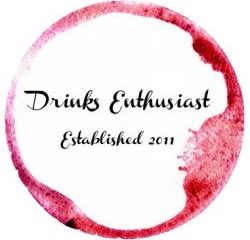The name behind a gin can sometimes define the brand. There’s brands that name themselves after a specific process, others after their originator, some to a loose connection, and in the case of this one – after the postcode that it originates from.
Originator Martin Price mentions on his website his inspiration and influence behind his making of SW4 –
Quinine.
A white crystalline alkaloid which is derived from the bark of a Cinchona tree. It is referred to by many different names such as Quina, Quinquina, Quinine Bark, Peruvian Bark and Jesuit’s Bark to just name a few of them.
First isolated in 1820 by French chemists P. J. Pelletier and J. B. Caventou, quinine bark has been used for many hundreds of years before that to treat symptoms of malaria.
Quinine is almost insoluble in water, but it dissolves readily in alcohol. Hence the fashion among colonial British officers and officials in India of mixing quinine, their bitter anti-malarial medicine which was part of everyday life in tropical climes, with sugary water – and Gin.
And so, out of life or death necessity, one of life’s great pleasures was invented.
The search for great Gin and Tonic has occupied me for many years. On my journey I have encountered many wonderful people, who have shared their knowledge of liquids, cocktails, recipes, and bars where the elements are most expertly combined and served.
But in the end, to get to the particular style and flavour of Gin that I had always imagined in my mind, I had to make my own.
Welcome to SW4 London Dry Gin. I hope that you enjoy the journey as much as I have.
So what is this journey?
SW4 is made in small batches approx. 500 Litres at a time in the ‘Tom Thumb’ named pot still at Thames Distillers in Clapham. After the twelve dried botanicals (juniper, lemon peel, savory, orange peel, orris root, coriander seed, liquorice root, cinnamon, cassia. almonds, nutmeg and angelica) have been macerated within a grain spirit (primarily wheat but also barley) and standard London water blend for 12 hours, it’s then distilled five times.
Created by Master Distiller Charles Maxwell since its inception in 2009, the process of both distillation and bottling is all done one one site – a rarity to find these days. In the end, SW4 is created for primarily the gin and tonic drinkers in the world and not necessarily for cocktails, but before we come onto that, lets see how they fare, both the original as well as it’s stronger brother –
SW4 – 40%
A London Dry gin. Light with subtle aromas on the nose of lemon peel and cassia, moving to a soft and subtle lingering effect on the palate that creates a slight warmth.
SW4 – 47%
Light with a dry nose of lemon peel and cassia. Slight sharpness on the palate but mellows quickly, then back into a roaring freshness of citrus and coriander. Quickly warms for a long, lingering finish.
Fantastic on their own, but as mentioned, this is more a gin and tonic gin. However, maybe give this a go straight after –

Summer Lovin’
Glass –
Highball
Ingredients –
37.5 ml SW4 gin
20 ml crème de cassis
25 ml cranberry juice
12.5 ml elderflower cordial
20 ml lemon juice
12.5 ml gomme syrup
dash of egg white
3 rasberries
Method –
Shaken, and strained over cubed ice. Garnished with raspberries and a slice of orange
Martin has come up with a gem here, and i’d say has realised his dream and journey to create a gin that not only goes well with tonic, but also within other creations too. Worthy of inclusion within your drinks cabinet.
© David Marsland and Drinks Enthusiast 2013. Unauthorized use and/or duplication of this material without express and written permission from this blog/sites author and owner is strictly prohibited. Excerpts and links may be used, provided that full and clear credit is given to David Marsland and Drinks Enthusiast with appropriate and specific direction to the original content.

